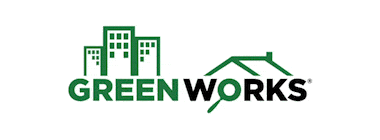Posts
How to Find Termite Damage During Home Inspections
Termites are a nightmare for every homeowner. Every year, termites cause billions of dollars in structural damage in the United States. These insects grow in hidden places and affect the overall structure of the house, making it vulnerable.
Many houses lose their structural integrity due to termite damage. Let’s discover how to find termites during a home inspection and what to do if you have noticed signs of termite infestation.
But first of all, we need to know what a termite actually is!

What is a Termite?
A termite is a small insect that feeds on materials containing cellulose. This tiny insect has some resemblance to ants. Termites live in large colonies, and they are good at consuming wood and paper around the clock. Their devastating job wreaks havoc on human beings.
Common Types of Termites in the U.S.
In the United States, there are different types of termites, such as:
Subterranean Termites
These are the most destructive termites. These termites live underground and build mud tubes to travel. Subterranean termites need moist environments, which is why they thrive near foundations, basements, or crawl spaces.
Drywood Termites
These termites don’t need to be in contact with soil, and they can consume drywood. They can live in the drywood, which is why it is difficult to detect them. These termites are usually found in hardwood floors, furniture, and wooden structures.
Dampwood Termites
These termites prefer a highly humid environment and are usually found in wood affected by water damage. In coastal regions, dampwood termites are more common. Homes that don’t have moisture problems are less likely to be infested by dampwood termites.
Signs of Termite Damage in the Home
There can be some visible signs of termite infestation in a home. These signs can help to find termite damage in the home. The signs are:
Mud Tubes
Subterranean termites, which live in colonies in the soil, make their way to the food source in small mud tunnels. These tunnels can be found in crawl spaces, behind drywall, or along foundation walls.
Hollow Sound of Wood
If you hear a hollow sound when tapping wooden beams, termites must have been there. Those beams are eaten by termites from the inside.
Warped Wood
Termite damage can seem like water damage. If the floors seem to be warped and paint peels, it means that termites are present there.
Frass
Drywood termites leave behind droppings that resemble sawdust. This dust is usually found under the infested wood.
Swarms and Discarded Wings
Especially in the spring season, flying termites (swarmers) can be seen near light sources. Piles of wings can also be found near doors and windows.
How Do Home Inspectors Find Termites During a Home Inspection?
The professional home inspectors do not rely on their eyes only. They use different tools and techniques to detect if there are hidden termites in the home.
Moisture Meter
Termites are found in places with high moisture content. A moisture meter can detect places that are more likely to have termite infestations.
Thermal Imaging
Infrared cameras are used to detect the temperature difference behind walls. Termite activity behind walls can be detected by thermal imaging.
Sounding Tools
The home inspectors use a special tapping tool to detect hollow spots or soft spots in the wood. Some inspectors usea stethoscope to hear the movement of termites in the walls.
Borescopes
These are the small cameras attached to a flexible tube. These cameras can be inserted into walls and tight spaces. It can help to visualize what’s behind the surface.
Areas Most Likely to be Infested by Termites
In a home, there are areas that are at high risk of termite infestation. While finding termite damage, the home inspectors start from these areas:
- Basement and Crawl Spaces
- Attics
- Interior Walls
- Kitchen and Bathroom Cabinets
- Windows and Doors
- Garages
- Wooden Decks
What to Do if There Is Termite Damage in Your Home?
Termite damage can make your home unfit to live in. It can destroy the whole structure from the inside. If you have seen any signs of termites in your home, you need to do the following things:
1. Confirm the Presence of Termite
The very first thing is to check what type of termite is present in your home and at which spots it is present. A professional home inspector can detect the presence of termites and recommend a way out accordingly.
2. Determine the Damage Caused by Termites
The licensed home inspector can assess the termite damage and may recommend repair or replacement of the part.
3. Consult Pest Control Experts
After confirming the presence and extent of damage by the termite, you should take the necessary steps by consulting the pest control experts. They will help to eliminate termites from your home.
4. Prevent Termites in the Future
It is better to ask the home inspector for possible reasons behind the termite infestation. You need to be vigilant with those in the future to prevent such scenarios.
Conclusion
Termite damage is not visible at the initial stage. The presence of termites can be detected once they have caused enough damage.
New homeowners should be more attentive in checking the signs of termite presence. If termites were ever present in the home, they need to discuss this factor with pest control experts before having negotiations with the seller.
Whether you’re purchasing a new home or have lived in one for years, scheduling a termite inspection with GreenWorks Inspections is a smart way to avoid unexpected structural damage.



